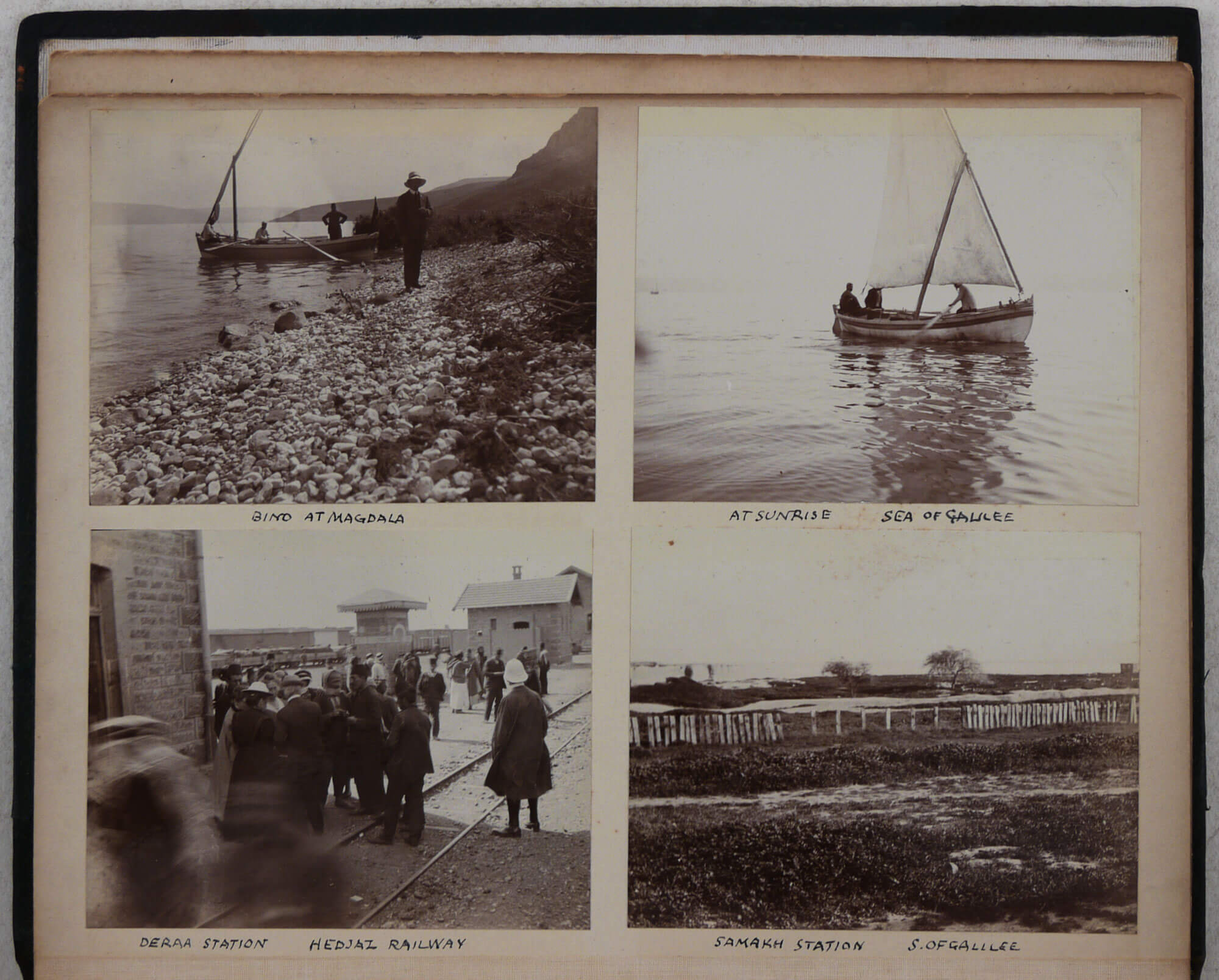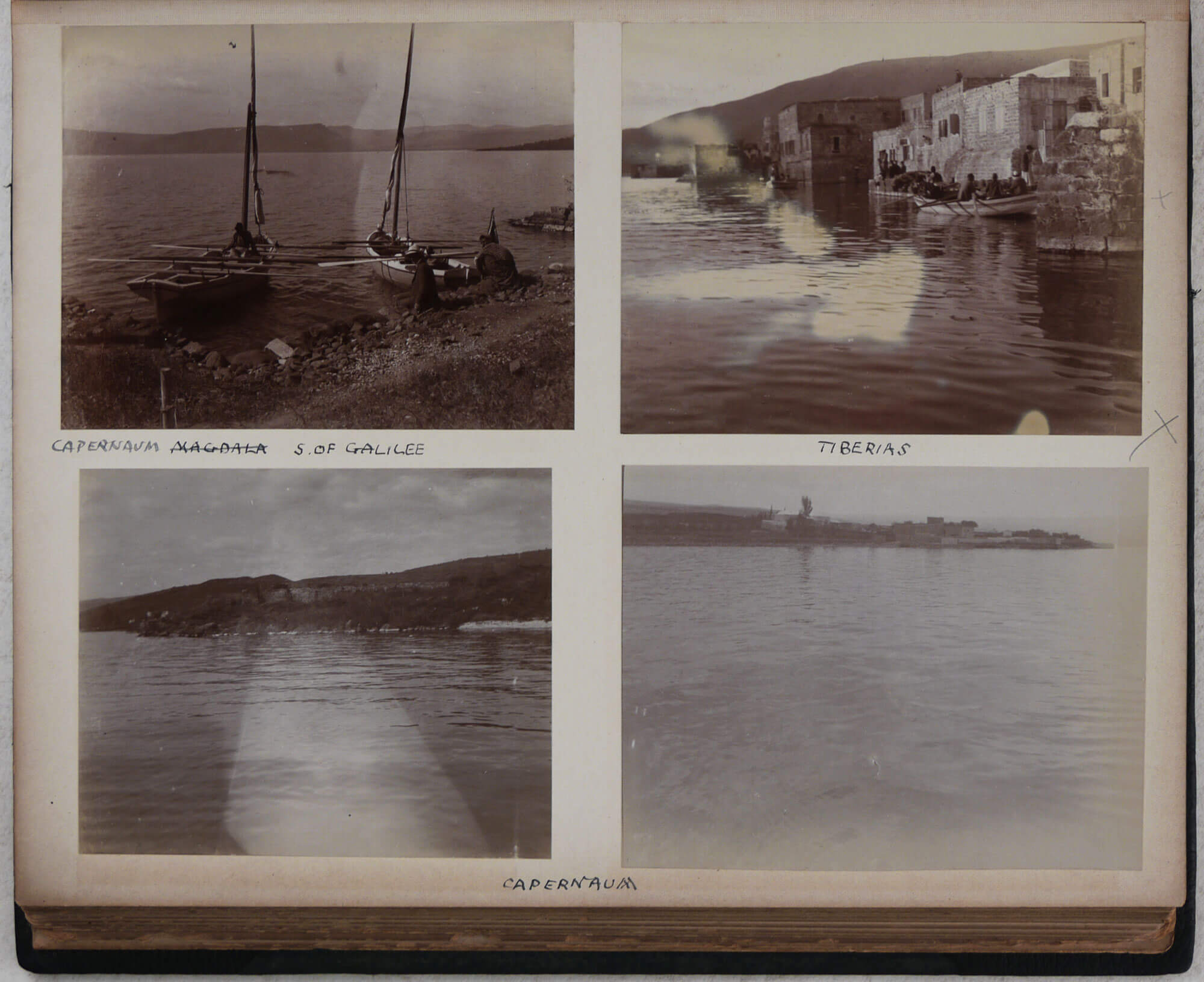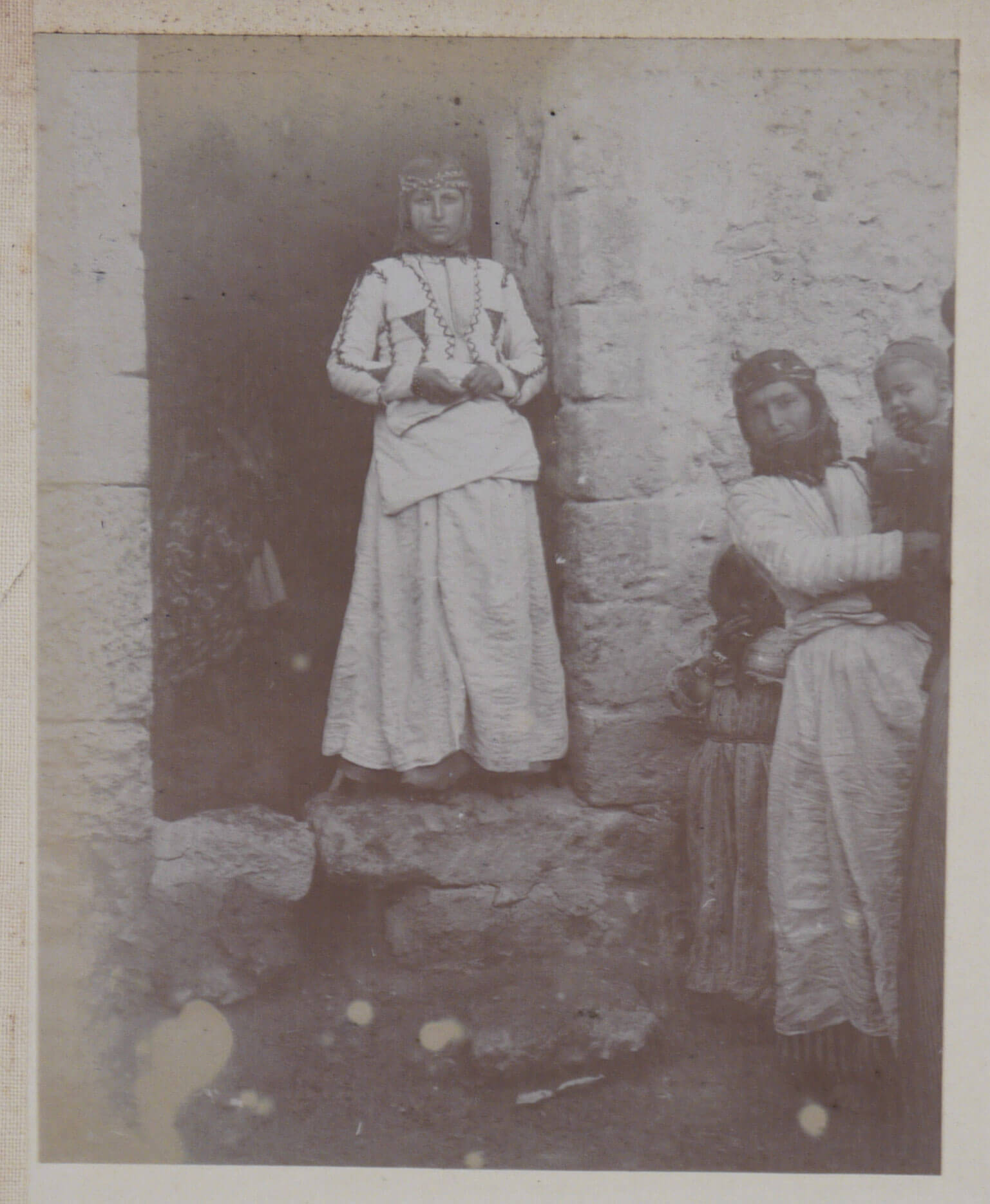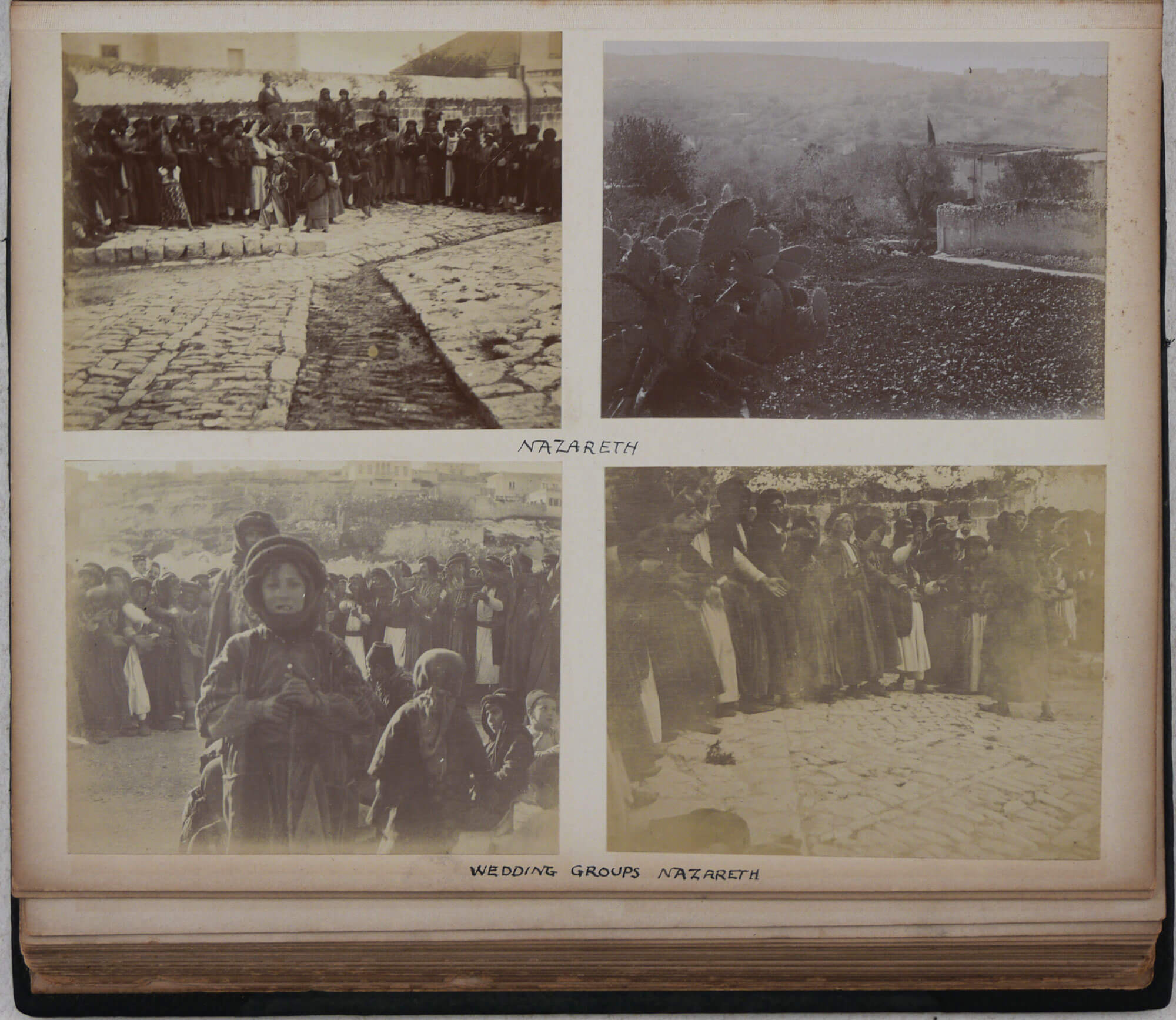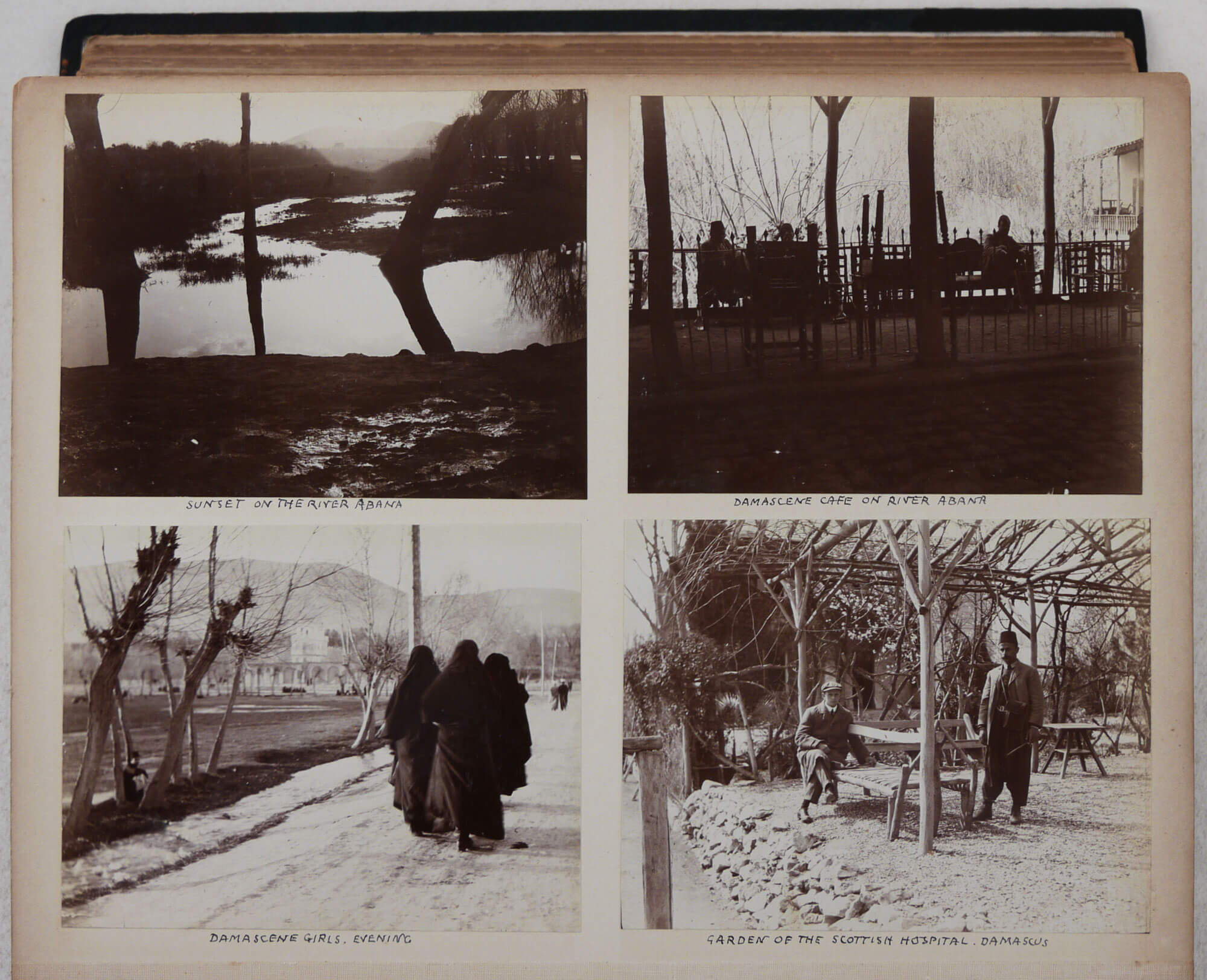
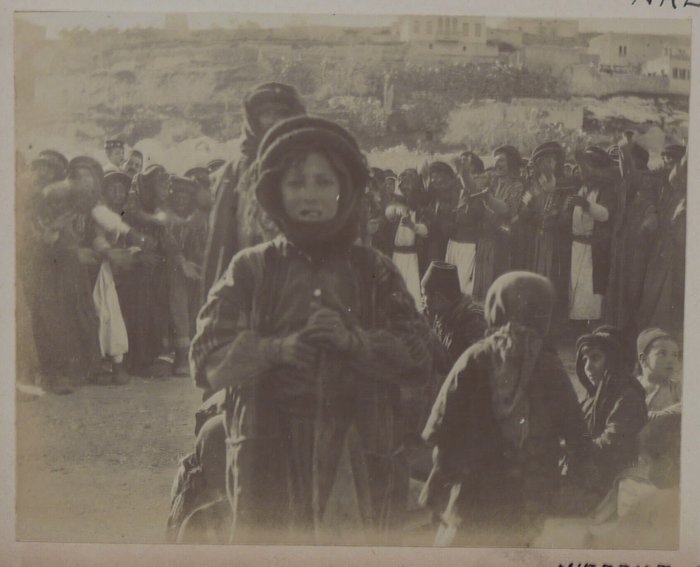








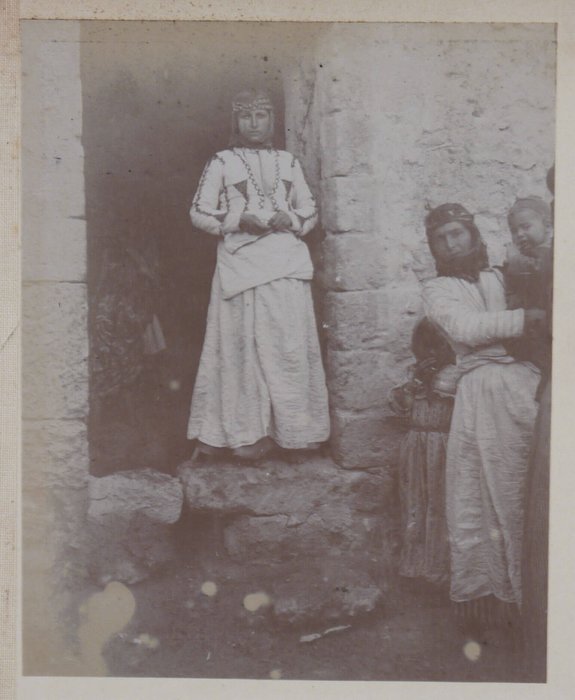








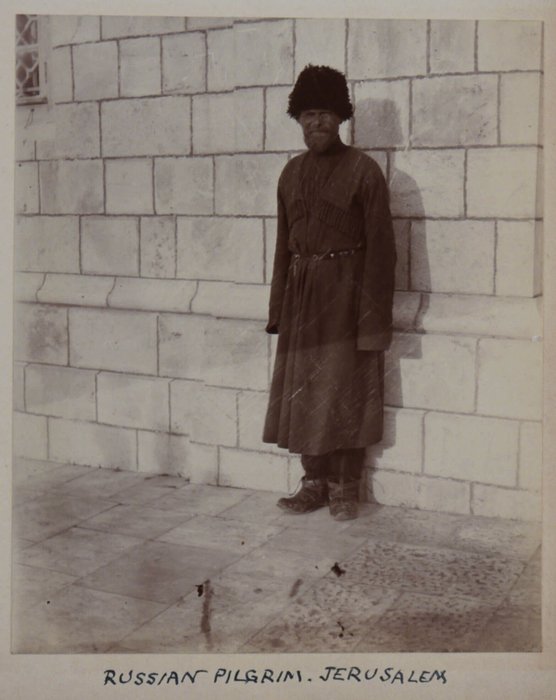


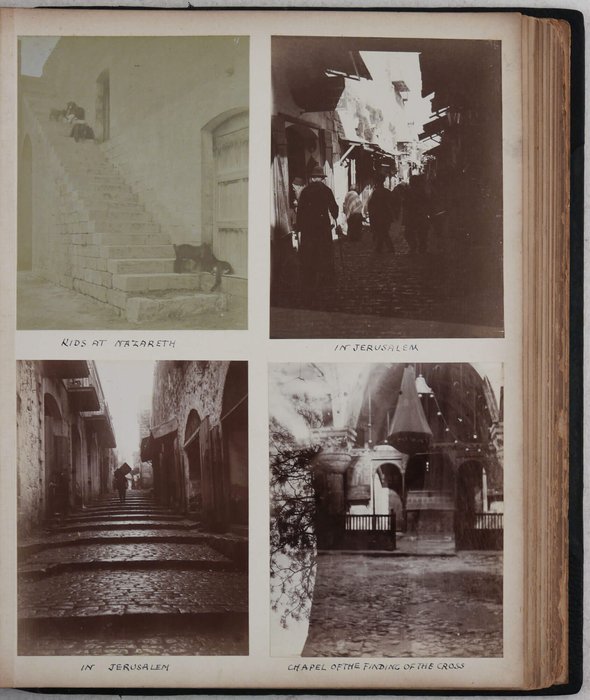


















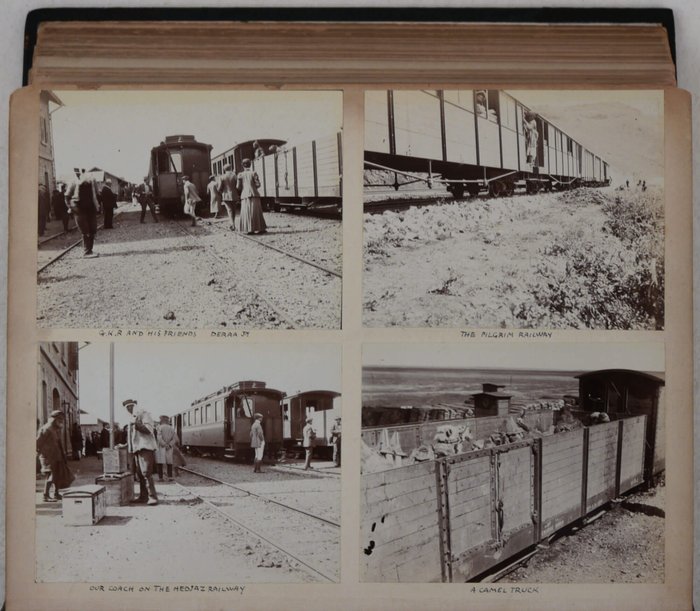


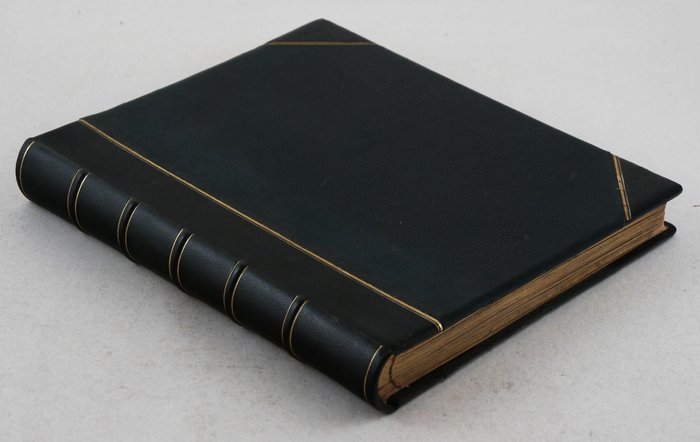
#PD42
Ca. 1908
Folio album (ca. 30x24,5 cm). 23 card stock leaves. With 184 mounted gelatin silver photographs ca. 10x13 cm (4 x 5 ¼ in). All photos with neat period black ink captions on the mounts (some captions relate to several photos). Period dark green half morocco with pebbled cloth boards, neatly rebacked; marbled endpapers; all edges gilt. Binder’s paper label “J. Mawdsley & Son, Liverpool” mounted in the right lower corner of the front pastedown endpaper. Edward Rae’s ink dedication inscription on verso of the front free endpaper; the inscription reads “Gray Kynoch Rae from his loving father & fellow traveller, 1908.” Several mounts with minor chipping or losses on extremities, a few photos faded, but overall a very good album of strong interesting photos.
Attractive extensive collection of lively original vernacular photos of a classical trip to Palestine, Syria and Lebanon, taken in 1908 by an English stockbroker, traveller and writer Edward Rae and his son Gray Kynoch Leothart Rae, who continued his father’s business and became a prominent Liverpool stockbroker himself. The trip was part of a more extensive travel, which included journeys to Egypt, the Levant and Constantinople. In Egypt, the Raes went up the Nile from Cairo to the Second Cataract at Wadi Halfa on board Thomas Cook’s steamer “Rameses III,” then crossed the Suez Canal and toured the territory of the Ottoman Levant (modern-day Israel and Palestine, Lebanon and Syria), finally travelling by Lebanon and Hedjaz Railways in the direction of modern-day Saudi Arabia.
About half of the photos in the album (ca. ninety) illustrate the Raes’ travel in modern-day Israel and Palestine. The album opens with over fifty views of the northern region of Galilee, showing the Sea of Galilee at Tiberias, Capernaum and Magdala, local fishing boats, cattle herds, “Bedouin tents,” skyline views of Tiberias (with a minaret), Cana (city well, cacti grove), Nazareth (the Fountain of the Virgin, general views of the outskirts), a series of portraits of Nazareth women and girls posing in traditional clothes or carrying water jugs on their heads, local kids, five street scenes with “wedding groups at Nazareth,” a portrait of a man from the village of Samakh near Nazareth (ruined by the Zionist Haganah forces in 1948), “waterfall near River Yarmuk, country of the Gadarenes,” &c. Several photos show the region near Mount Carmel.
Over forty photos of Jerusalem and its environs show the Church of the Holy Sepulchre, the Western Wall, the North Wall, “Chapel of the Finding of the Cross,” the Garden of Gethsemane, the Tomb of Absalom, the Dome of the Rock mosque (captioned as “Mosque of Omar”), Mount of Olives (“Chapel of the Virgin,” “Russian church”), the Tower of David, city streets and markets, several general views taken from above (from “the new hotel” or the Mount of Olives), village of Siloam, Bethany, portraits of local market goers, peasants, women, “Russian pilgrims,” and a “wayfarer near Haifa.” A dozen photos of Jaffa show street scenes, “the prison gate,” local men, scenes on board “Russian steamer Tsarevich,” &c.
The album also contains a dozen views of Beirut (city harbour and waterfront taken “from Bassoul’s Hotel,” “Greek schooners in Beyrout harbour,” “the garden at Bassoul’s,” “from the breakwater,” &c.). About twenty photos of Damascus show city streets with tram car tracks, the Umayyad Mosque (“minar of the Great Mosque,” “fountain in courtyard of Great Mosque,” “main entrance to Great Mosque”), Abana/Barada River, “interior of disused mosque,” “Damascus café on River Abana,” “Damascus girls,” “garden of the Scottish hospital,” “Turkish soldiers on parade,” &c.
The album closes with sixteen photos, taken during a ride on the “Lebanon” and “Hedjaz” Railways. The images show the wilderness and mountains along the railway track, stopped trains at the “Deraa junction,” “our coach on the Hedjaz Railway,” “a camel truck,” train cars with “pilgrims for Mecca,” &c.
Edward Rae’s original presentation inscription warmly dedicates the album to his son, who was in his early twenties during the journey. Several photos in the album also portray Gray Rae: “Bino at Magdala,” posing “near R. Kishon,” “near the plain of Esdraelon,” near the Dome of the Rock (captioned “Bambino”), “Bino & Joseph, New Hotel, Jerusalem,” “Bino & George Mabedy,” “G.H.R. and his friends, Deraa J[unctio]n.,” &c. Overall an attractive, extensive collection of lively amateur gelatin silver photos of modern-day Israel, Syria and Lebanon, illustrating the history of travels and pilgrimage to the Holy Land and the Levant in the early 20th century.
Edward Rae was the son of a prominent banker and patron of arts (most notably, the Pre-Raphaelites), George Rae (1817-1902). He made a successful banking career and was a chairman of the Liverpool Stock Exchange for 21 years, authoring “the Forged Transfer Act, which has proved of inestimable value to stockholders” (Mr. Edward Rae// The Guardian. London, 28 June 1923, p. 12). In the 1870s and 1880s, he travelled across the Middle East and North Africa, as well as Lapland, Kola Peninsula and the coast of the White Sea, publishing his travel accounts with John Murray: “The Land of the North Wind, or Travels among the Laplanders and the Samoyeds” (1875), “The country of the Moors, A Journey from Tripoli in Barbary to the City of Kairwan” (1877), and “The White Sea Peninsula, A Journey in Russian Lapland and Karelia” (1881). During his travels around the Middle East, he became “one of the first Englishmen to enter the holy city of Kairwan, in Tunisia” (Mr. Edward Rae// The Guardian. London, 28 June 1923, p. 12). In 1874, Rae was elected a Fellow of the Royal Geographical Society. He was also credited with introducing the game of cricket into “Russian Lapland” (Weird… but True: Curious Cricketing Tales, 1892-2006// The Independent. London, 23 August 2006, p. 56).
Gray Kynoch Leathart Rae “became a member of the Liverpool Stock Exchange in May 1910, and a member of the committee in April 1932. He was an active member until two weeks before his death. He was a member of the Royal Liverpool Golf Club. During the First World War, he was a captain in the Royal Artillery. In the 1939-1945 War, he joined an artillery regiment and was later an instructor with the rank of major at O.C.T.U. at Llandrindod Wells” (Liverpool Echo, 4 March 1947, p. 3).




